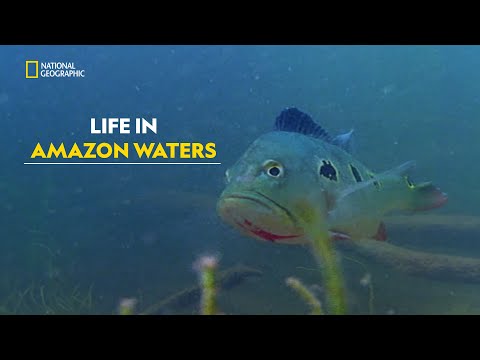
The Amazon rainforest, often referred to as the Earth’s lungs, not only boasts an unparalleled diversity of terrestrial flora and fauna but also houses some of the most intriguing aquatic life forms in its sprawling river systems. National Geographic Wild’s series “Amazonia” kicks off with a captivating first episode titled “Amazon’s Water Giants,” where viewers are taken on an extraordinary journey into the murky waters of the Amazon River to discover the giants that lurk beneath.
#### The Heart of the Amazon
“Amazon’s Water Giants” begins by setting the geographical and ecological scene. The Amazon River is one of the largest and most complex river systems in the world, stretching across multiple South American countries. It is home to countless species, and this episode focuses particularly on its larger aquatic inhabitants — from fearsome predators like pirarhas and caimans to gentler giants such as manatees and giant otters.
#### Unveiling Giant Creatures
The episode provides thrilling visuals and detailed insights into how these giants adapt to their competitive environment. One of the showstoppers is certainly the arapaima, one of the world’s largest freshwater fish, which can grow up to 10 feet long. Viewers get an up-close look at its unique ability to breathe air from the surface due to its labyrinth organ, an adaptation necessitated by the oxygen-poor waters it inhabits.
Another fascinating creature featured is the Amazonian manatee, which contrasts sharply with its more aggressive river-mates. The show details their diet primarily consisting of water plants and how they gracefully navigate through water despite their sizeable bodies.
#### Predators vs Prey
Through stunning underwater footage, “Amazon’s Water Giants” explores this dynamic ecosystem’s delicate balance between predator and prey relationships. The pirarha scenes are particularly gripping as they debunk some myths while confirming their ferocious nature during a feeding frenzy.
#### Human Interaction and Conservation Efforts
Integral to this narrative are also stories about local communities who have learned to coexist with these water giants over centuries. Their traditional knowledge and practices in fishing demonstrate a symbiotic relationship that often contributes both to their survival and to preserving these species. However, challenges remain due largely in part to environmental changes and human activities such as dam construction which threaten these habitats.
The episode doesn’t shy away from discussing conservation efforts being undertaken both locally by indigenous groups and globally by environmental organizations aiming at sustainable interaction with these natural resources. This dual perspective underscores both hope for future conservation but also looming threats that could undermine these efforts.
#### Visuals and Narration
True to Nat Geo Wild’s standard, “Amazon’s Water Giants” excels in cinematography — capturing breathtaking shots both above water showing lush landscapes; beneath it reveals a world teeming with life often invisible from above. The narration is engaging; it effectively threads viewer through multiple storylines while maintaining a focus on overarching themes about biodiversity, ecology, human impact on natural habitats.
#### Final Thoughts
Episode 1 of “Amazonia” offers more than just a documentation; it’s an immersive experience into one of Earth’s most fascinating ecosystems guided by cogent storytelling aimed at educating viewers about complex environmental issues without overwhelming them. It serves not only as an eye-opener but also enriches one’s appreciation for aquatic wildlife conservation efforts ongoing in Amazonia.
For those keen on understanding our planet’s biodiversity or enthusiasts of wildlife documentaries, “Amazon’s Water Giants” marks a compelling start promising yet another thoughtful series from Nat Geo Wild dedicated to revealing nature’s marvels while advocating for their preservation.
